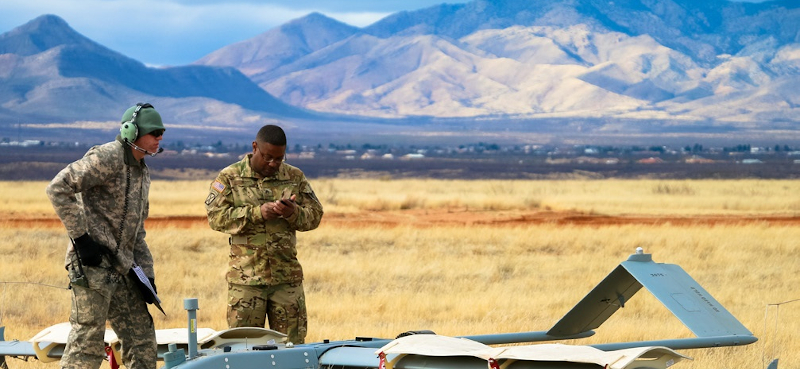Climate Adaptation and Resilience Planning Examples
U.S. General Services Administration and Department of Transportation

Volpe Exchange Project
The U.S. General Services Administration (GSA), in collaboration with the U.S. Department of Transportation (DOT), incorporated climate change considerations into building design and renovation processes for the U.S. DOT Volpe Exchange Project in Cambridge, Massachusetts. The project, scheduled for completion in December 2023, represents the federal government’s largest-of-its-kind property exchange transaction and was brokered between the U.S. General Services Administration (GSA)
Exchange Project in Cambridge, Massachusetts. The project, scheduled for completion in December 2023, represents the federal government’s largest-of-its-kind property exchange transaction and was brokered between the U.S. General Services Administration (GSA) and Massachusetts Institute of Technology
and Massachusetts Institute of Technology (MIT; MITIMCo) on behalf of DOT. Below are examples of adaptation actions incorporated into the project that will reduce the vulnerability of DOT infrastructure to climate change impacts.
(MIT; MITIMCo) on behalf of DOT. Below are examples of adaptation actions incorporated into the project that will reduce the vulnerability of DOT infrastructure to climate change impacts.
GSA and DOT collaborated to proactively include considerations from the building’s shape, structure, orientation, floor, and office layouts to building materials, mechanical systems and furnishings, which all contribute to the new facility’s sustainability and climate resiliency. The new DOT Volpe Center building will include several climate-ready features:
- Locating the first floor and major building systems above the projected 2070 500-year floodplain,
- Upgraded roofing systems and the building envelope (where warranted),
- Above-grade emergency back-up generators located on the 13th floor mechanical level, An above-grade data center, and
- Pipes for chilled water distribution that are sized to handle increased loads due to future climate change impacts.
Without this type of adaptation planning and implementation, sea level rise and storm surges could compromise buildings and damage important communication and safety infrastructure.
Some examples of the green landscaping and strategies used are:
- Leveraging combination of pervious areas, open space, and softscaping to reduce the existing site condition from 83% impervious area to 65%,
- Using soil replacement for better infiltration of stormwater during rain events,
- Planting native and adaptive vegetation to reduce irrigation water demand,
- Collecting runoff from impervious areas (such as the roof) into a 15,000 gallon cistern to be used to meet 100% of the site's irrigation demand, and
- Incorporating green roofs into the 3rd and 6th level outdoor terrace areas.
MIT’s planned redevelopment of the exchange parcel will transform the remaining 10 acres of the Volpe parcel into a mixed-use development with approximately:
- 1,400 new residential units, including 280 permanently subsidized affordable units and 20 middle-income units,
- 1.7 million square feet of lab, research and office space,
- A community center, and
- 3.5 acres of publicly beneficial open space.
MIT has facilitated multiple virtual workshops to promote an open dialog with various community stakeholders and the public. This forum created a platform to discuss how the redevelopment of the site can create a more inclusive and equitable community for the area’s residents and businesses.
Department of Defense

Fort Huachuca REPI, Arizona
Located in Arizona’s Sonoran Desert, Fort Huachuca is accustomed to periodic drought and wildfires that threaten the unmanned aircraft system training and electronic warfare testing missions of this once remote installation. The threat to the installation’s physical infrastructure and water security led Fort Huachuca to partner with the Arizona Land and Water Trust (ALWT)
is accustomed to periodic drought and wildfires that threaten the unmanned aircraft system training and electronic warfare testing missions of this once remote installation. The threat to the installation’s physical infrastructure and water security led Fort Huachuca to partner with the Arizona Land and Water Trust (ALWT) to conduct an extensive Water Supply and Use Assessment that included:
to conduct an extensive Water Supply and Use Assessment that included:
- An analysis of groundwater levels and surface flows,
- A survey of current irrigation and water use, and
- A comprehensive review of historic pumping records and water rights.
In FY 2020, Fort Huachuca and ALWT completed this survey and were awarded $2 million from DOD’s Readiness and Environmental Protection Integration (REPI) Program . The REPI Program’s mission is to make military installations more resilient to climate change and land use conversion. The funding from REPI coupled with $4.3 million in partner funding will protect over 2,000 acres of working ranches and forests from incompatible development that would increase demand for groundwater pumping in the area. Funds will also support installation efforts with the U.S. Forest Service to reduce hazardous fuels within the adjacent Coronado National Forest, resulting in the reduced threat of wildfires in the area and at Fort Huachuca.
. The REPI Program’s mission is to make military installations more resilient to climate change and land use conversion. The funding from REPI coupled with $4.3 million in partner funding will protect over 2,000 acres of working ranches and forests from incompatible development that would increase demand for groundwater pumping in the area. Funds will also support installation efforts with the U.S. Forest Service to reduce hazardous fuels within the adjacent Coronado National Forest, resulting in the reduced threat of wildfires in the area and at Fort Huachuca.

U.S. Naval Academy/Naval Support Academy, Annapolis, MD
A DOD-funded resilience study (Fiscal Year 2020 to 2022) will result in a comprehensive plan with specific courses of action to cohesively address and mitigate the combined effects of land subsidence, sea level rise, ground water change, coastal flooding/storm surge, and inadequate stormwater management at USNA. This will include a mix of approaches:
- Structural (seawalls, bulkheads, floodwalls, stormwater retrofits),
- Natural (earthen berms/levees, rain gardens, living shorelines),
- Nonstructural (changes in land use), and
- Temporary solutions to issues where long-term permanent protection may take years to implement.
The installation is also in the midst of implementing additional stormwater repair projects and proposing to repair and restore the seawall and shoreline to address structural deficiencies on the existing seawall and potential future impacts from extreme weather events, storm surge, sea level rise, and land subsidence.
Additional Examples
Department of Transportation
DOT plans to leverage the climate adaptation knowledge and experience of its employees along with other Federal Agencies. For example, the Department of Commerce’s National Oceanic and Atmospheric Administration, National Institute of Standards and Technology, the National Institute of Building Sciences, the Department of Energy, and the General Services Administration’s Office of Federal High-Performance Green Buildings have expertise that DOT can leverage to help implement this priority action.
have expertise that DOT can leverage to help implement this priority action.
Design and construction contracts for new buildings include language to specify that architects and civil engineers evaluate strategies and materials to reduce climate change risk. In addition, contracts specify that DOT-identified resilience strategies must be incorporated into new building designs. For example, cables that previously would not be specified as salt water resistant may be specified as such in new building designs to prevent damage resulting from salt water intrusion.
DOT is analyzing ways to determine projected climate vulnerabilities by first identifying the best available science, including downscaled projections, for localities with major mission critical facilities. Following this research, DOT is determining whether building designs may be vulnerable to climate impacts and need to be revamped to include new information, strategies, and materials that enhance the climate resilience of operational infrastructure.
The Department identified mission critical assets and completed key vulnerability assessments for some Operating Administrations with a small building footprint. Recent renovations in the U.S. Merchant Marine Academy (USMMA) will mitigate potential building damage from flooding. The Maritime Administration issued guidance to protect infrastructure and personnel from higher than normal water levels due to climate change.
Department of Defense
The Department of the Army’s Integrated Training Area Management (ITAM) program has conducted short- and long-term rehabilitation measures on training ranges for over 30 years. ITAM repairs maneuver training damage and reconfigures training lands to increase soil reliance, which preemptively decreases the negative impacts of extreme weather events on military training. ITAM also conducts active vegetation management within training areas, which reduces the risk of wildland fire exacerbated by increased fuel accumulation and enduring drought conditions.
NAVFAC is currently developing an agent-based model for supply chains; this is a project started in Fiscal Year 2020 and continuing through Fiscal Year 2021. It provides a tool to evaluate supply chain disruptions on fuel deliveries and adaptive planning based on perturbations to environmental conditions and available infrastructure. This will simulate and model joint logistics-over-the-shore operations using agents that have local sensing, decision-making, and adaptation capability.
The Army Future Command’s Development Command integrated a tactical microgrid with Italy and Canada in June 2019 during Capable Logistician, a multinational logistics exercise. The purpose of this exercise was to test microgrid interoperability and assess North Atlantic Treaty Organization (NATO) standards at Drawsko Pomorskie Training Grounds, Poland. The exercise, which included approximately 3,450 troops and representatives from 30 nations, demonstrated several innovative, “smart energy” technologies with the potential to reduce fuel waste, improve operational effectiveness, and enhance interoperability among NATO forces. The integration was the first example of a multinational tactical microgrid using an open standard for power source hardware and software interoperability.
At MacDill Air Force Base, the United States Fish and Wildlife Service and regional partners designed and implemented a 1.6-mile-long living shoreline project starting in 2004. This ongoing project helped to adapt to climate change by creating a natural shoreline stabilization system that will adjust to changes in sea level to control shoreline erosion from heavily trafficked shipping lanes in Tampa Bay, Florida. The shoreline is composed of oyster reefs on man-made structures, fossilized shells, and coastal marsh plants. These decrease wave energy, increase sediment accumulation, improve water quality through oyster filtration, enhance biodiversity, and provide habitats for several marine species. This project helps reduce risks to portions of remaining undeveloped shoreline in the Tampa Bay region. Six phases of work have been completed to date with several future phases planned to reduce risks for another half mile of shoreline.
References
The examples on this page are from the following sources, which also provide additional examples.

![]() Exchange Project in Cambridge, Massachusetts. The project, scheduled for completion in December 2023, represents the federal government’s largest-of-its-kind property exchange transaction and was brokered between the U.S. General Services Administration (GSA)
Exchange Project in Cambridge, Massachusetts. The project, scheduled for completion in December 2023, represents the federal government’s largest-of-its-kind property exchange transaction and was brokered between the U.S. General Services Administration (GSA)![]() and Massachusetts Institute of Technology
and Massachusetts Institute of Technology![]() (MIT; MITIMCo) on behalf of DOT. Below are examples of adaptation actions incorporated into the project that will reduce the vulnerability of DOT infrastructure to climate change impacts.
(MIT; MITIMCo) on behalf of DOT. Below are examples of adaptation actions incorporated into the project that will reduce the vulnerability of DOT infrastructure to climate change impacts.
![]() is accustomed to periodic drought and wildfires that threaten the unmanned aircraft system training and electronic warfare testing missions of this once remote installation. The threat to the installation’s physical infrastructure and water security led Fort Huachuca to partner with the Arizona Land and Water Trust (ALWT)
is accustomed to periodic drought and wildfires that threaten the unmanned aircraft system training and electronic warfare testing missions of this once remote installation. The threat to the installation’s physical infrastructure and water security led Fort Huachuca to partner with the Arizona Land and Water Trust (ALWT)![]() to conduct an extensive Water Supply and Use Assessment that included:
to conduct an extensive Water Supply and Use Assessment that included:![]() . The REPI Program’s mission is to make military installations more resilient to climate change and land use conversion. The funding from REPI coupled with $4.3 million in partner funding will protect over 2,000 acres of working ranches and forests from incompatible development that would increase demand for groundwater pumping in the area. Funds will also support installation efforts with the U.S. Forest Service to reduce hazardous fuels within the adjacent Coronado National Forest, resulting in the reduced threat of wildfires in the area and at Fort Huachuca.
. The REPI Program’s mission is to make military installations more resilient to climate change and land use conversion. The funding from REPI coupled with $4.3 million in partner funding will protect over 2,000 acres of working ranches and forests from incompatible development that would increase demand for groundwater pumping in the area. Funds will also support installation efforts with the U.S. Forest Service to reduce hazardous fuels within the adjacent Coronado National Forest, resulting in the reduced threat of wildfires in the area and at Fort Huachuca.

